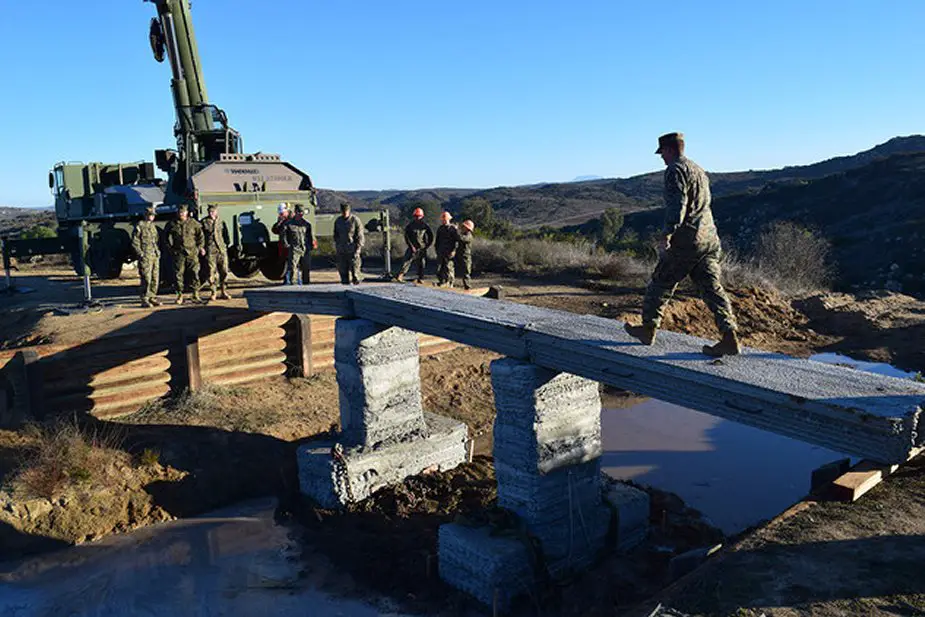Breaking news
US Marines testing combat engineering applications of 3D printing.
The US 1st Marine Logistic Group (1st MLG) used an Automated Construction of Expeditionary Structures (ACES) printer (3D printer) to build, among other structures, a footbridge out of layers of concrete. Though, this technology is not deployable yet.
 A Marine with 1st Marine Logistics Group walks across a concrete footbridge during a 3D concrete printing exercise at Camp Pendleton, Calif. (Picture source : Marine Corps)
A Marine with 1st Marine Logistics Group walks across a concrete footbridge during a 3D concrete printing exercise at Camp Pendleton, Calif. (Picture source : Marine Corps)
The Marine Corps has high hopes for using ACES printers on the field, Capt. Matthew Friedell, team leader of the Advanced Manufacturing Operations Cell in the Marine Corps Rapid Sustainment Office, said during a media conference call on February 07.
The Marines do have bridge technology that can deploy, Friedell said, but the 3D printer allows engineers to create custom-made structures for crossing any gap. “When we bring a medium girder bridge with us, it can only be used as a medium girder bridge,” Friedell said. “But if we bring a technology such as a concrete 3D printer and we can locally source concrete, we can make not only bridges but structures or engineering obstacles or mobility or counter-mobility implementation.”
In addition to large 3D printers, units throughout the service already have access to about 150 smaller 3D printers which can be used to create small parts or clasps. Such new technologies will help US Marines, whether their location, to deal with various problems by creating parts, small structures but even bigger ones. Thanks to small ACES printers, pockets of Marines could even build obstacles, mobility or counter-mobility implementations if needed. This infinity of applications will make 3D printers essential for the Marine Corps in the future.





























